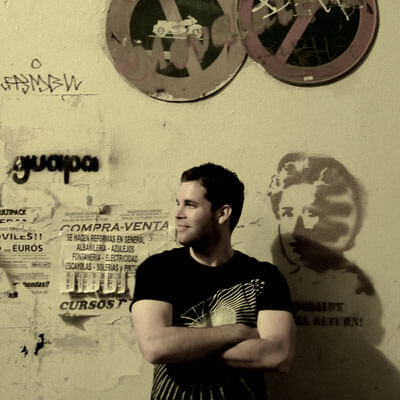Tamas Dezso (b.1978) is a documentary fine art photographer working on long-term projects focusing on the margins of society in Hungary, Romania, and other parts of Eastern Europe. His work has been exhibited worldwide, with solo exhibitions in 2011 in Poland, Bangladesh, Budapest, New Mexico, and at the Robert Koch Gallery in San Francisco, and recent exhibitions at the New York Photo Festival, Shanghai Museum of Contemporary Art, and FOAM Photo Museum in Amsterdam. He was twice Hungarian Press Photo’s Photographer of the Year (2005 and 2006), and has received awards from organizations such as World Press Photo, Pictures of the Year International, NPPA’s Best of Photojournalism, and PDN. His photographs have appeared in TIME magazine, The New York Times, National Geographic, GEO, Le Monde magazine, and many others. Dezso has recently been nominated for the 2012 Prix Pictet.
Tamas Dezso's series 'Here, Anywhere' offers a desolate yet beautiful look at the people and places left behind during the post-communist transition in Hungary. Begun in 2009, the series explores the unique atmosphere of the country's now 20-year-long transition, and changing notions of Eastern European identity. With the introduction of democracy in the 1990s came euphoria and promise, but unrealized expectations of quickly catching up with the West have led to widespread disappointment and frustration, compounded by the current serious economic difficulties have fanned the popularity of far right politics, as well as an anachronistic nostalgia for the stability of communism. Presently Hungary has a right wing populist government and the strongest opposition party is the neo-Nazi party with nearly 1/8th of the eligible voters and gaining popularity.
Dezso's layered images present unsettling moments of stillness that poetically allude to this gritty reality. Motivated by the isolation he sees his country facing, Dezso photographs the people and places of Hungary as symbols, where "a certain out-dated, awkward, longed-to-be-forgotten Eastern Europeanness still lingers." This award-winning series has garnered international attention, earning Dezso First Place at the 2011 CENTER Project Competition in Santa Fe, the Daylight Magazine & Center for Documentary Studies Project Prize, and Grand Prize at the Jeune Création Européenne Biennal 2011/2013 in Paris-Montrouge.
Source: Robert Koch Gallery
Interview with Tamas Dezso
All About Photo: When did you realize you wanted to be a photographer?
Tamas Dezso: Soon after I left the University of Technology in Budapest in 2000.
AAP: Where did you study photography?
TD: I am self-taught.
AAP: How long have you been a photographer?
TD: I started as a photojournalist with a political daily in 2000.
AAP: What or who inspires you?
TD: Music. Beethoven, Bach and Mozart.
AAP: How could you describe your style?
TD: Documentary.
AAP: Do you have a favorite photograph or series?
TD: Richard Avedon 'Italy #9', 'Boy and Tree, Sicily, July 15, 1947'
AAP: What kind of gear do you use? Camera, lens, digital, film?
TD: Phase One cameras with various Schneider Kreuznach lenses.
AAP: Favorite(s) photographer(s)?
TD: Richard Avedon and Irving Penn
AAP: What advice would you give a young photographer?
TD: "Follow the advice of others only in the rarest cases." -- Beethoven
AAP: What are your projects?
TD: I am interested in the transitional period, the period after the fall of communism in Eastern Europe.
AAP: Your best memory as a photographer?
TD: My first trip to Romania.
AAP:If you were someone else who would it be?
TD: A pianist.
AAP: Your favorite photo book?
TD: Walter Niedermayr's Civil Operations.
